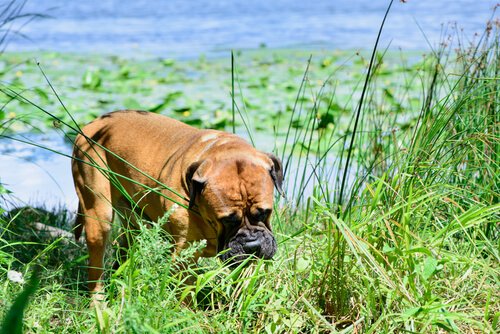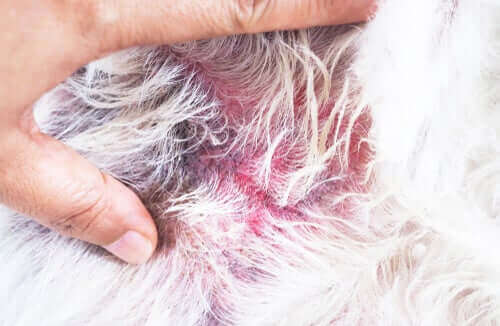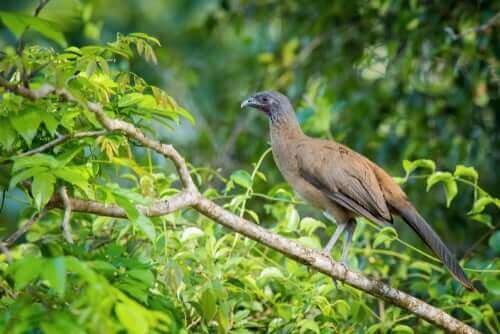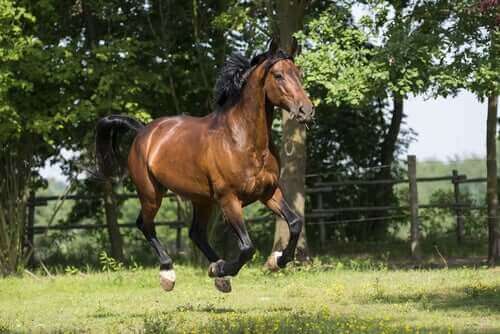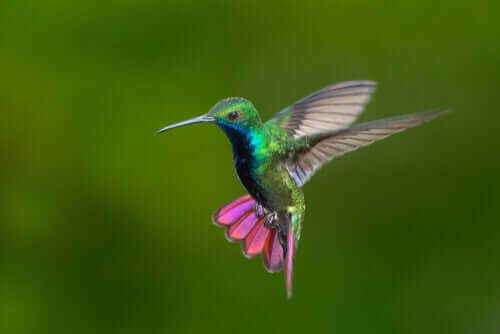세상에서 가장 희귀한 동물들
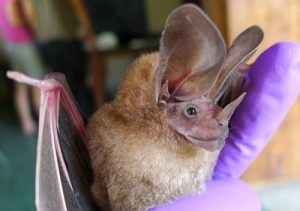
애니메이션이나 편집된 사진이 아니다. 이 동물들은 현재 존재하는 가장 희귀한 동물 중 일부이다. 인간이 알고 있는 동물종은 전체 동물종의 5분의 1도 안 된다는 사실을 알고 있는가? 사람과 분리되어 사는 희귀종이 더 많다. 이 글에서는 세상에서 가장 희귀한 동물들, 그중에서도 사람들이 관심을 가지는 몇 가지 종에 대해서 알아본다.
세상에서 가장 희귀한 동물들
이런 놀라운 희귀동물은 조지 루카스의 공상과학 영화에나 등장할 것 같지만 현존한다! 존재하는 (또는 현재 알고 있는) 가장 희귀한 동물을 일부 소개하겠다.
1. 쿠바큰깔때기귀박쥐 (Cuban Greater Funnel-eared Bat)
학명은 Natalus Primus이고 깔때기귀박쥐과에 속한다. 이상한 외관 특징은 붉은 노랑 털과 깔때기 모양의 귀이다. 이 박쥐는 쿠바의 후벤투드 섬에서만 발견된다. 스타워즈의 캐릭터처럼 보이는 외관으로 “요다”라고 불린다.
2. 애기아르마딜로 (Pink Fairy Armadillo)
이 동물에서 따온 포켓몬도 있다. 아르헨티나 쿠요지역에 사는 아주 작은 아르마딜로(겨우 10cm 정도)이다. 부드러운 흰색 털은 분홍색 껍질로 덮여 있다.
이 종은 지하에서 많은 시간을 보내기 때문에 지상에서 걸어 다니는 것을 발견하기 어렵다. 사람과 가까워지기를 싫어하고 붙잡히면 일주일 이상 살지 못한다.
3. 코끼리땃쥐 (Elephant Shrew)
학명은 Macroscelidea이며, 가장 희귀한 동물 중 하나이기도 하고, 매우 특이한 이름을 가지고 있다. 왜 “코끼리”가 뾰족뒤쥐?라고 생각하게 한다. 이는 거대한 포유류인 코끼리와 확실히 관련 있다. 트렁크 같은 긴 주둥이가 코끼리와 닮았기 때문이다. 뾰족뒤쥐 중에 가장 덩치가 크기 때문에 붙여진 이름이기도 하다.
몸은 최대 30cm(그리고 꼬리는 최대 25cm까지)까지 추정한다. 주로 낮에 활동하며 암석의 균열, 나무줄기의 틈 또는 버려진 둥지에 숨어 있다.

4. 아이아이원숭이 (Aye-Aye)
학명은 Daubentonia madagascariensis 이고, 박쥐, 원숭이 및 미어캣 사이의 혼합이다. 거대한 눈, 덤불 같은 꼬리, 큰 귀, 영장류처럼 긴 손가락을 가지고 있으며 마다가스카르에만 살고 있다. 일반적으로 그들은 지상에서보다 나뭇가지에서 대부분을 보내고 싶어한다. 그들은 가지와 나뭇잎으로 만든 구형 둥지에서 잠을 자는 야행성 동물이다.
5. 북쪽털코웜뱃 (Northern Hairy-nosed Wombat)
학명은 Lasiorhinus Krefftii이고 세계에서 가장 희귀한 포유류 중 하나이다. 뉴 사우스 웨일즈, 퀸즐랜드, 빅토리아에서 고대부터 살았지만, 오늘날 서식지는 에핑 포레스트 국립 공원의33㎢ 지역으로 제한된다.
슬프게도 멸종 위기에 처해 있다. 돼지 같은 코, 스라소니 같은 귀, 다람쥐 같은 몸을 가지고 있다.
6. 별코두더지 (Star-nosed Mole)
학명은 Condylura Cristata이고 두더지과에 속한다. 서식지는 북아메리카 전역이고, 주로 북동부 해안에 산다.
별코두더지는 길이가 20 cm이고 치아가 44개이다. 주요 특징(세계에서 가장 희귀한 동물 중 하나가 된 이유)은 코이고, 코에 분홍색의 22개의 이동 촉수가 있어 어둠 속에서 이동한다. 곤충, 벌레 및 갑각류를 사냥하는 데에도 도움이 된다.

7. 톱상어 (Sawfish)
이름으로 이 동물이 어떻게 생겼는지 상상할 수 있을 것이다. 대형 물고기(5m 길이까지 성장)의 코가 톱 모양이다. 학명은 Pristis Pristis이고 톱상어과 (광선 관련)에 속하고, 태평양의 깊은 아열대 해역에 산다.
8. 하프 스펀지 (Harp Sponge)
가장 희귀한 동물을 찾고 있다면 이 동물이 우선이다. 이 동물은 배가 난파된 후 남겨진 나뭇가지 모양의 촛대처럼 보인다. 섬세하고 매우 우아해 보일지 모르지만, 갑각류에게는 매우 위험하다. 신속하게 갑각류를 삼킬 것이다!
이미지 소스 : noticiaspet.com, www.infoanimales.com
애니메이션이나 편집된 사진이 아니다. 이 동물들은 현재 존재하는 가장 희귀한 동물 중 일부이다. 인간이 알고 있는 동물종은 전체 동물종의 5분의 1도 안 된다는 사실을 알고 있는가? 사람과 분리되어 사는 희귀종이 더 많다. 이 글에서는 세상에서 가장 희귀한 동물들, 그중에서도 사람들이 관심을 가지는 몇 가지 종에 대해서 알아본다.
세상에서 가장 희귀한 동물들
이런 놀라운 희귀동물은 조지 루카스의 공상과학 영화에나 등장할 것 같지만 현존한다! 존재하는 (또는 현재 알고 있는) 가장 희귀한 동물을 일부 소개하겠다.
1. 쿠바큰깔때기귀박쥐 (Cuban Greater Funnel-eared Bat)
학명은 Natalus Primus이고 깔때기귀박쥐과에 속한다. 이상한 외관 특징은 붉은 노랑 털과 깔때기 모양의 귀이다. 이 박쥐는 쿠바의 후벤투드 섬에서만 발견된다. 스타워즈의 캐릭터처럼 보이는 외관으로 “요다”라고 불린다.
2. 애기아르마딜로 (Pink Fairy Armadillo)
이 동물에서 따온 포켓몬도 있다. 아르헨티나 쿠요지역에 사는 아주 작은 아르마딜로(겨우 10cm 정도)이다. 부드러운 흰색 털은 분홍색 껍질로 덮여 있다.
이 종은 지하에서 많은 시간을 보내기 때문에 지상에서 걸어 다니는 것을 발견하기 어렵다. 사람과 가까워지기를 싫어하고 붙잡히면 일주일 이상 살지 못한다.
3. 코끼리땃쥐 (Elephant Shrew)
학명은 Macroscelidea이며, 가장 희귀한 동물 중 하나이기도 하고, 매우 특이한 이름을 가지고 있다. 왜 “코끼리”가 뾰족뒤쥐?라고 생각하게 한다. 이는 거대한 포유류인 코끼리와 확실히 관련 있다. 트렁크 같은 긴 주둥이가 코끼리와 닮았기 때문이다. 뾰족뒤쥐 중에 가장 덩치가 크기 때문에 붙여진 이름이기도 하다.
몸은 최대 30cm(그리고 꼬리는 최대 25cm까지)까지 추정한다. 주로 낮에 활동하며 암석의 균열, 나무줄기의 틈 또는 버려진 둥지에 숨어 있다.

4. 아이아이원숭이 (Aye-Aye)
학명은 Daubentonia madagascariensis 이고, 박쥐, 원숭이 및 미어캣 사이의 혼합이다. 거대한 눈, 덤불 같은 꼬리, 큰 귀, 영장류처럼 긴 손가락을 가지고 있으며 마다가스카르에만 살고 있다. 일반적으로 그들은 지상에서보다 나뭇가지에서 대부분을 보내고 싶어한다. 그들은 가지와 나뭇잎으로 만든 구형 둥지에서 잠을 자는 야행성 동물이다.
5. 북쪽털코웜뱃 (Northern Hairy-nosed Wombat)
학명은 Lasiorhinus Krefftii이고 세계에서 가장 희귀한 포유류 중 하나이다. 뉴 사우스 웨일즈, 퀸즐랜드, 빅토리아에서 고대부터 살았지만, 오늘날 서식지는 에핑 포레스트 국립 공원의33㎢ 지역으로 제한된다.
슬프게도 멸종 위기에 처해 있다. 돼지 같은 코, 스라소니 같은 귀, 다람쥐 같은 몸을 가지고 있다.
6. 별코두더지 (Star-nosed Mole)
학명은 Condylura Cristata이고 두더지과에 속한다. 서식지는 북아메리카 전역이고, 주로 북동부 해안에 산다.
별코두더지는 길이가 20 cm이고 치아가 44개이다. 주요 특징(세계에서 가장 희귀한 동물 중 하나가 된 이유)은 코이고, 코에 분홍색의 22개의 이동 촉수가 있어 어둠 속에서 이동한다. 곤충, 벌레 및 갑각류를 사냥하는 데에도 도움이 된다.

7. 톱상어 (Sawfish)
이름으로 이 동물이 어떻게 생겼는지 상상할 수 있을 것이다. 대형 물고기(5m 길이까지 성장)의 코가 톱 모양이다. 학명은 Pristis Pristis이고 톱상어과 (광선 관련)에 속하고, 태평양의 깊은 아열대 해역에 산다.
8. 하프 스펀지 (Harp Sponge)
가장 희귀한 동물을 찾고 있다면 이 동물이 우선이다. 이 동물은 배가 난파된 후 남겨진 나뭇가지 모양의 촛대처럼 보인다. 섬세하고 매우 우아해 보일지 모르지만, 갑각류에게는 매우 위험하다. 신속하게 갑각류를 삼킬 것이다!
이미지 소스 : noticiaspet.com, www.infoanimales.com
인용된 모든 출처는 우리 팀에 의해 집요하게 검토되어 질의의 질, 신뢰성, 시대에 맞음 및 타당성을 보장하기 위해 처리되었습니다. 이 문서의 참고 문헌은 신뢰성이 있으며 학문적 또는 과학적으로 정확합니다."
- Abdullah, N., Elias, N., Miard, P., Lim, L. & Ruppert, N. (2019) Ultrasound use by Sunda colugos offers new insights into the communication of these cryptic mammals, Bioacoustics, 28(5), 397-403, https://www.tandfonline.com/doi/full/10.1080/09524622.2018.1463294
- Acosta, X., Corronca, J., Doma, I., González-Reyes, A., Rocha, M., y Repp, E. (2016). Evaluación de la diversidad en comunidades de tardígrados (Ecdysozoa: Tardigrada) en hábitats urbano y rural de la ciudad de Salta (Argentina). Iheringia. Série Zoologia, 106, e2016026. https://www.scielo.br/j/isz/a/WVQvNZdkHmxqY5KmgK6HjGd
- Ávila, V., González, A., González, T. y Vázquez, M. (2021). El género Ambystoma en México ¿Qué son los ajolotes?. CIENCIA ergo-sum, Revista Científica Multidisciplanaria de Prospectiva, vol. 28(2). https://www.redalyc.org/journal/104/10466283011/html
- Balk M., Benfield M., Branch T., Chen C., Cosgrove J., Dove A., Gaskins L., Helm R., Hochberg F., Lee F., Marshall A., McClain C., McMurray S., Schanche C., Stone S. y Thaler A. (2015). Sizing ocean giants: patterns of intraspecific size variation in marine megafauna. PeerJ, 3(715). https://peerj.com/articles/715/
- Bardele, C., Dominguez-Bello, M., Lynn, D., Obispo, N., Schultheiß, S. y Wright, A. (2017). Aviisotricha hoazini n. gen., n. sp., the Morphology and Molecular Phylogeny of an Anaerobic Ciliate from the Crop of the Hoatzin (Opisthocomus hoazin), the Cow Among the Birds. Protist, 168 (3), 335-351. https://www.sciencedirect.com/science/article/pii/S1434461017300214
- Bell-Anderson, K., Campbell, M., Campbell, H., Lawton, T., Udyawer, V. y Westcott, D. (2023) The southern cassowary (Casuarius casuarius johnsonii) remains an important disperser of native plants in fragmented rainforest landscapes. Austral Ecology, 48, 787–802. https://onlinelibrary.wiley.com/doi/full/10.1111/aec.13309
- Blier, P., Campbell, K., Devereaux, M., Munro, D. y Pamenter, M. (2021) Burrowing star-nosed moles (Condylura cristata) are not hypoxia tolerant. Journal Experimental Biology, 224 (19). https://journals.biologists.com/jeb/article/224/19/jeb242972/272464/Burrowing-star-nosed-moles-Condylura-cristata-are
- Bolnick, B., Di Fiore, A., Kirk, E., Lewis, R., Scarry, C. y Veilleux, C. (2016). Group benefit associated with polymorphic trichromacy in a Malagasy primate (Propithecus verreauxi). Scientific Reports, 6 (38418). https://www.nature.com/articles/srep38418
- Brum, S., Campbell, E., Da Silva, V., De Mello, D., De Souza, R., Gonçalves, R., Gravena, W. y Mintzer, V. (2023). The Amazon River dolphin, Inia geoffrensis: What have we learned in the last two decades of research?. Latin American Journal of Aquatic Mammals 20th Anniversary. 18.(1). https://www.lajamjournal.org/index.php/lajam/article/view/1523
- Charbonnier, Y., Papura, D., Rhouy, N., Rusch, A., Sentenac, G. y Touzot, O. (2021). Pest control services provided by bats in vineyard landscapes. Agriculture, Ecosystems & Environment, 306. https://www.sciencedirect.com/science/article/abs/pii/S0167880920303935
- Christensen, C., Couzin, I., Farine, D., Gall, G., Klarevas-Irby, J., Nyaguthii, B. y Papageorgiou, D. (2019). THE MULTILEVEL SOCIETY OF A SMALL BRAINED BIRD. Current Biology, 29. 1120-1121. http://erepository.uoeld.ac.ke/handle/123456789/1533
- Dalén, L., Dussex, N., Jarvis, E. y Robertson, B. (2022). The kākāpō (Strigops habroptilus). Trends in Genetics, Genome of the month, 38(8). https://www.cell.com/trends/genetics/fulltext/S0168-9525(22)00065-8
- Daly, I., How, M., Jared, S., Roberts, N. y Tetley, A. (2017). Colour preference in Odontodactylus scyllarus (Linnaeus, 1758) (Stomatopoda). Journal of Crustacean Biology, 37(4), 374–379. https://academic.oup.com/jcb/article/37/4/374/3865483
- Dehling J. (2017). How lizards fly: A novel type of wing in animals. PLoS ONE 12(12). https://journals.plos.org/plosone/article?id=10.1371/journal.pone.0189573
- Di Blanco, Y., Gaudin T. & Hicks P. (2018). Myrmecophaga tridactyla (Pilosa: Myrmecophagidae). Mammalian Species, 50(956), 1–13. https://academic.oup.com/mspecies/article/50/956/1/4968042?login=false
- Donnellan, S., Rouse, G., Stiller, J. y Wilson, N. (207). The Leafy Seadragon, Phycodurus eques, a Flagship Species with Low But Structured Genetic Variability, Journal of Heredity, 108(2). 152–162. https://academic.oup.com/jhered/article/108/2/152/2631585?login=false
- Du, B., Jiang, Y., Liu, W., Lu, B., Ruan, G., Yang, N. y You, Z. (2022). Spatio-Temporal Niche of Sympatric Tufted Deer (Elaphodus cephalophus) and Sambar (Rusa unicolor) Based on Camera Traps in the Gongga Mountain National Nature Reserve, China. Animals. 12(19). https://www.mdpi.com/2076-2615/12/19/2694
- Garde, E., Graham, Z., Heide-Jørgensen M. y Palaoro A. (2020). The longer the better: evidence that narwhal tusks are sexually selected. Biology Letters, 16(3). https://royalsocietypublishing.org/doi/full/10.1098/rsbl.2019.0950
- Grange, S., Kümpel, N., Mallon, D., Mapilanga, J., Queslin, E. y Quinn, A. (2015). Okapi (Okapia johnstoni) : conservation strategy and status review. Gland: IUCN and Institute Congolais pour la conservation de la nature, 6. https://portals.iucn.org/library/node/45844
- Haddock, S. y Johnsen, S. (2022). Macropina. Current Biology, 32(6), 256-257. https://www.sciencedirect.com/journal/current-biology/vol/32/issue/6
- Kabir, A. (2015). Most Beautiful Pigeons of Bangladesh. Animal and Veterinary Sciences. 3(2), 34-37. https://www.researchgate.net/publication/333682619_Most_Beautiful_Pigeons_of_Bangladesh
- Marks, J., Reid, M. y Vickers, R. (2023). First report of nectar robbing by sword-billed Hummingbirds Ensiferera Ensifera. Ornitología Neotropical. 34(2). https://www.researchgate.net/publication/373457868_FIRST_REPORT_OF_NECTAR_ROBBING_BY_SWORD-BILLED_HUMMINGBIRDS_ENSIFERA_ENSIFERA
- Martineau D., Measures L. y Lair S. (2016). Pathologic Findings and Trends in Mortality in the Beluga (Delphinapterus leucas) Population of the St Lawrence Estuary, Quebec, Canada, From 1983 to 2012. Veterinary Pathology, 53(1), 22-36.https://journals.sagepub.com/doi/full/10.1177/0300985815604726
- Marushchak, A., Marushchak, O., Nekrasova, O. y Tkachev, D. (2022). The Data on the Reproductive Biology of the Satanic Leaf-Tailed Geko, Uroplatus phantasticus (Squamata, Gekkonidae), at the BION Terrarium Center as a Contribution to ex situ Offspring Programs. Zoodiversity, 56(1). http://ojs.akademperiodyka.org.ua/index.php/Zoodiversity/article/view/304
- Matsumoto, Y., Miglietta, M. y Piraino, S. (2019). Transcriptome Characterization of Reverse Development in Turritopsis dohrnii (Hydrozoa, Cnidaria), G3 Genes|Genomes|Genetics, 9(12), 4127–4138. https://academic.oup.com/g3journal/article/9/12/4127/6028122
- Oliveira, L., Printes, R. y Schulz, F. (2021). Conflicts with Pumas in Southern Brazil: The Farmers’ view en M. Campbell (Ed.) y K. Kumar Jha (Ed.), Critical Research Techniques in Animal and Habitat Ecology: International Examples (pp. 201 – 224). Nova Science Pub Inc.
- Peterson, A. y McHenry, M. (2022). The persistent-predation strategy of the red lionfish (Pterois volitans). Proceedings of the royal society, 289(1980). https://royalsocietypublishing.org/doi/full/10.1098/rspb.2022.1085
이 텍스트는 정보 제공 목적으로만 제공되며 전문가와의 상담을 대체하지 않습니다. 의심이 들면 전문가와 상의하십시오.

